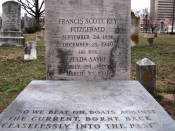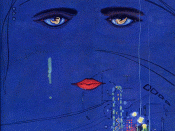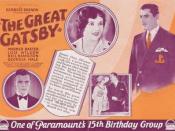The American Dream can be defined as the freedom to pursue one's goals and desires, the opportunity to overcome socio-economic barriers that previously held one in place. The Great Gatsby, by F. Scott Fitzgerald portrays the idea that the American Dream is just an illusion which dances on the waves of opportunity in America but never quite makes it ashore. Fitzgerald salutes the American Dream but warns against the dangers of living to fervently in a world full of erroneous perceptions of reality. The language used by Fitzgerald conjures up images of a long voyage, the forces of nature pirating the ship past its desired port while the captain believes the port lies directly ahead. Fitzgerald uses an alter ego, Nick, to give voice to his ideas of the American Dream. The figurative language Fitzgerald uses enhances his belief that the American Dream is pure, but often becomes corrupted while attempting to achieve it.
Fitzgerald uses figurative language to portray the positive aspects of the American Dream and the journey towards it. "And as I sat there brooding on the old, unknown world, I thought of Gatsby's wonder when he first picked out the green light at the end of Daisy's dock." The green light symbolizes Gatsby's hopes and dreams, his American Dream, the love of his life, Daisy. The color green also represents a traffic light which gives Gatsby permission to go "full speed ahead" for this dream. Fitzgerald uses colors to create imagery. Green embodies the vast continent of America, summoning dreamers to come and explore it. Gatsby views the green light as Daisy who he believes is summoning him to come and conquer her. Gatsby sees Daisy just as settlers viewed America as a symbol of hope, the life they'd always wanted to live, a future full...


